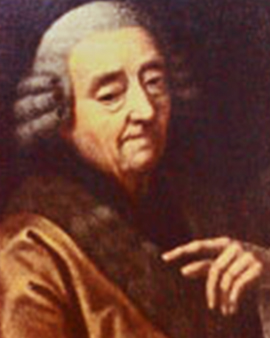The commissioned painting of the 18th century served to a large extent for social representation. The pictorial representation of all those who were in official positions is almost impossible to overlook. And yet the artists succeeded in characterising their personality, at least to some extent, whether through the characteristics of their clothing, their ambience or in their connection with other people or special objects.
Antoine de Favray's portraits are primarily documents. They show events and portraits, document official events and the presence of renowned personalities. But also genre themes were part of his repertoire as well as some landscape representations as views of his places of residence. In terms of pictorial expression, these works are rococo in style, but here and there one can discern signs of a classicist and sober style of painting. de Favray's paintings have little in common with the historicizing and mythological themes of his teacher Jean-François de Troy, who was, however, in keeping with artistic taste in France. De Troy was director of the Académie de France in Rome, which was intended to enable young artists to study Italian art treasures. In 1738 de Favray joined his teacher and travelled to Rome. There he met members of the Order of Malta, with whom he moved to Malta in 1744. Obviously the painter identified with their ideals and in 1751 became a knight of the order and their portraitist himself. Malta's exposed position in the Mediterranean Sea has long determined its proximity to the Ottoman Empire. It was decisive for the actions of the Christian Maltese against Islam. The knights systematically took Muslim ships under their control and enslaved the crew. In the course of these actions, de Favray came to Constantinople in 1762, where he met the French ambassador, the Comte de Vergennes. In numerous works, the artist documented the official appearances of the ambassador, but also of Islamic dignitaries. In this way he contributed to the Orient becoming the focus of interest of the Western world.
However, Orientalism in the art of the late 18th and 19th centuries, for which de Favray must be regarded as one of the precursors, corresponded little to reality. It is rather romanticizing ideas that have been brought to light here. The exotic and the sensual were the themes and led to scenes of depiction such as can be seen in de Favray's contemporaries François Boucher (1703 - 1770) and Jea-Honore Fragonard (1732 - 1806). In de Favray's case, too, the visual expression of this artistic phase is often reflected in painterly stagings in which Europeans such as Vergennes and his wife were depicted in oriental garments. Two of the artist's well-known designs date from 1766 and 1768, but such non-authentic views nevertheless became the epitome of oriental culture in Europe.
×





.jpg)
.jpg)
.jpg)
.jpg)
.jpg)
.jpg)
.jpg)
.jpg)
.jpg)
.jpg)
.jpg)
.jpg)
_Oil_On_C_-_(MeisterDrucke-943212).jpg)
_Oil_On_C_-_(MeisterDrucke-943212).jpg)
.jpg)
.jpg)
.jpg)
.jpg)
 Comte de Vergennes wit - (MeisterDrucke-274792).jpg)
 Comte de Vergennes wit - (MeisterDrucke-274792).jpg)
.jpg)
.jpg)
.jpg)
.jpg)
.jpg)
.jpg)
.jpg)
.jpg)
.jpg)
.jpg)
.jpg)
.jpg)
.jpg)
.jpg)
.jpg)
.jpg)
.jpg)
.jpg)
.jpg)
.jpg)
.jpg)
.jpg)
.jpg)
.jpg)
.jpg)
.jpg)
.jpg)
.jpg)
.jpg)
.jpg)
.jpg)
.jpg)
.jpg)
.jpg)
.jpg)
.jpg)
.jpg)
.jpg)
.jpg)
.jpg)
.jpg)
.jpg)
 Comte de Vergennes in Oriental Costume 1766 - (MeisterDrucke-168802).jpg)
 Comte de Vergennes in Oriental Costume 1766 - (MeisterDrucke-168802).jpg)
.jpg)
.jpg)
.jpg)
.jpg)
.jpg)
.jpg)
.jpg)
.jpg)
.jpg)
.jpg)
.jpg)
.jpg)
.jpg)
.jpg)
.jpg)
.jpg)
.jpg)
.jpg)
.jpg)
.jpg)
.jpg)
.jpg)






